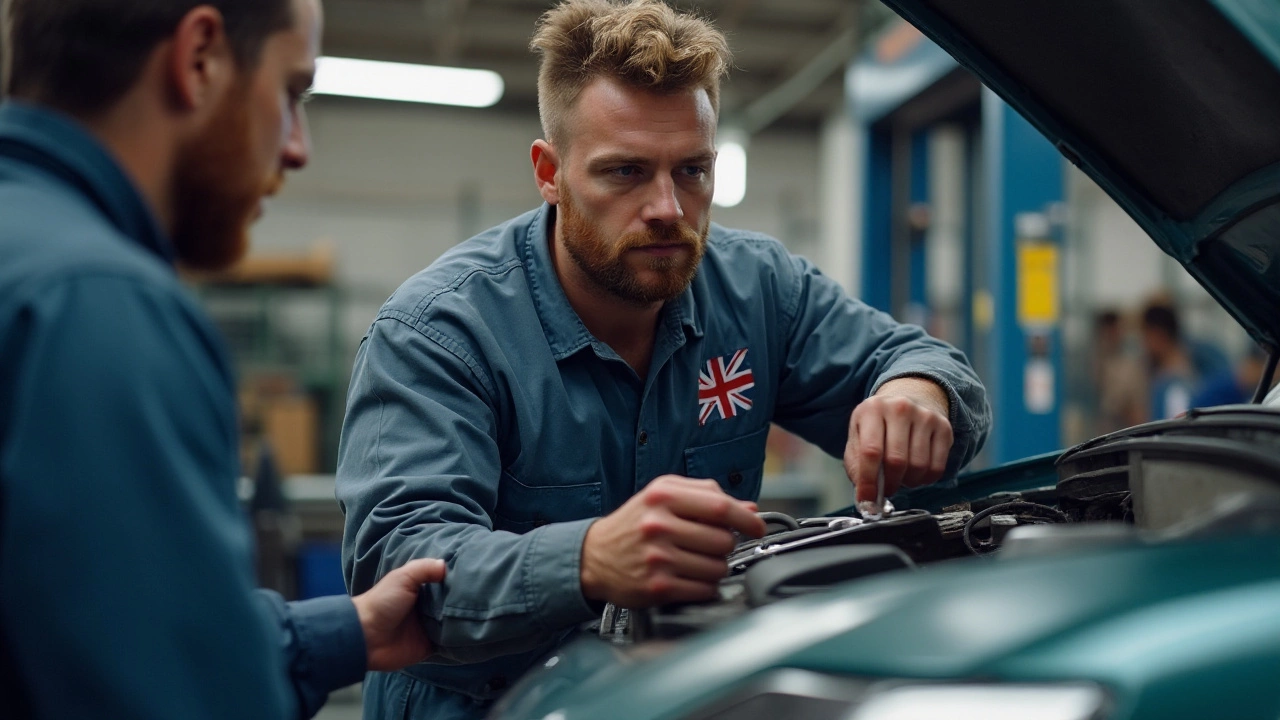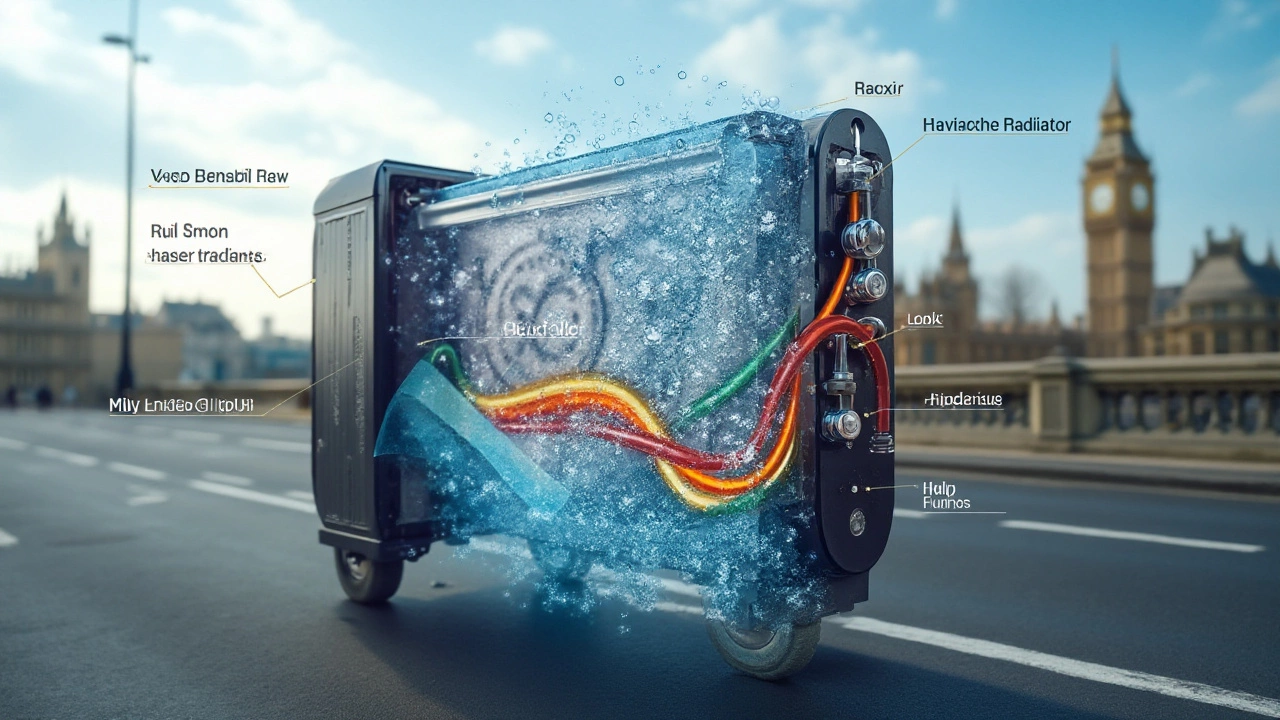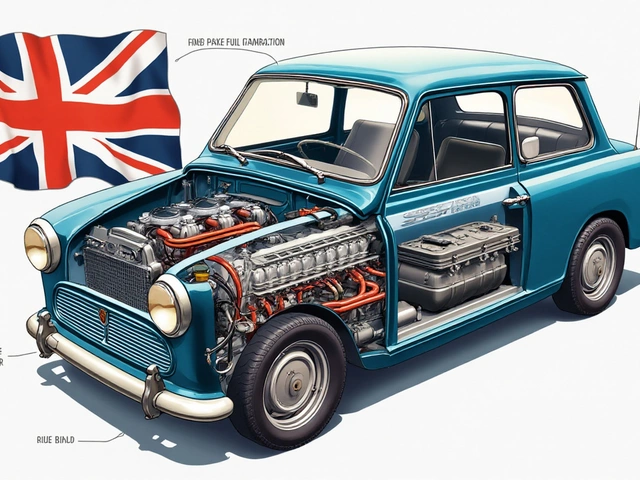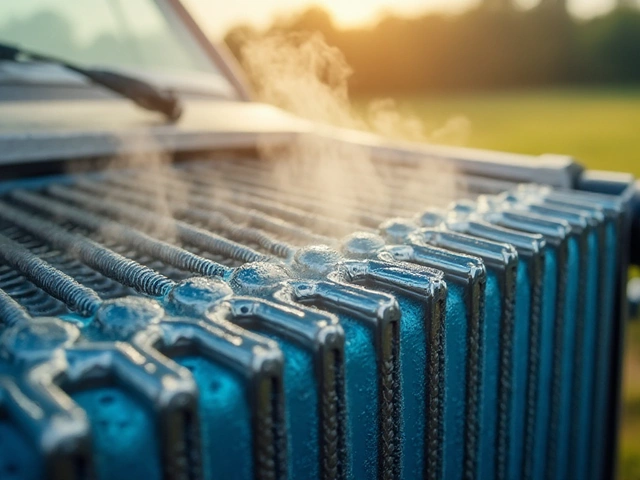Car radiators are often overlooked but are essential for the smooth operation of your vehicle. They serve as the central component in your car's cooling system, working tirelessly to keep the engine temperature under control. Without a functional radiator, your engine could easily overheat, leading to costly repairs or even permanent damage.
In this article, we will uncover the mysteries of car radiators, shedding light on how they function, potential issues that may arise, and crucial maintenance tips. Whether you're a seasoned gearhead or a curious driver, understanding these fundamentals can help you appreciate how every ride can remain smooth and cool.
- What is a Car Radiator?
- How Radiators Keep Engines Cool
- Common Radiator Problems
- Radiator Maintenance Tips
What is a Car Radiator?
A car radiator is the heart of your vehicle's cooling system, and its primary duty is to keep your engine from getting too hot by transferring heat away from it. This magical transformation of heat happens as coolant flows through the radiator's network of narrow tubes. The fins attached to these tubes serve as little wings that allow heat to dissipate into the air from the coolant swiftly. Many drivers don't realize how much they rely on this finely-tuned piece of machinery until they find themselves on the side of the road, steam billowing from beneath the hood.
Crafted typically from materials like aluminum or copper, car radiators stand as the silent guardians of your engine. They’re built to be durable and efficient, tasked with managing the demanding conditions inside your engine bay. However, one of the interesting aspects often overlooked is the story of the radiator's ingenuity and how it evolved over time. A quote from the famous automotive engineer, Ferdinand Porsche, states,
"The radiator is a language all its own, singing with the hum of efficiency and reliability."This captures the essence of how integral it is to the vehicle's function. As engines generate energy, they naturally produce a massive amount of heat. Without a means to dispel this heat, the risk of an engine 'boiling over' and seizing becomes very real. This is where the radiator steps in, maintaining a delicate cooling balance.
In today's cars, radiators have evolved significantly from their early incarnations, adopting more advanced technology and materials designed to enhance performance and resilience. Modern radiators are equipped to handle higher pressures from engines that are more powerful than those of any generation that came before. The process focuses not only on heat transfer but also on reducing the overall weight of the radiator structure to improve fuel efficiency and vehicle dynamics. Although simple in concept, a radiator's effectiveness is in its simplicity, deriving power from laws of thermodynamics that have been harnessed and perfected over decades.

How Radiators Keep Engines Cool
Car radiators are the unsung heroes of automotive technology, entrusted with the crucial task of keeping engines from overheating. At the heart of this process, a simple yet ingenious mechanism circulates coolant through a series of tubes. As the engine runs, it generates immense heat, threatening to engulf the entire system. The coolant, a mix of water and antifreeze, absorbs this heat before whisking it away to the radiator. Here, the magic begins: the radiator's cooling fins come into play, dissipating the heat, effectively transforming the superheated coolant back to a manageable temperature before it takes another trip around the engine.
How does this intricate ballet happen? The radiator is typically positioned at the front of the vehicle, allowing it to utilize airflow as the car moves to help dissipate heat. In fact, the structure itself is designed to maximize efficiency—the tubes are flattened and aligned within the grille to increase surface area for cooling. This clever design ensures that every bit of movement aids in cooling the engine, creating a synergy with the natural motion of driving. It's an elegant system, one that takes advantage of simple physics to solve a complex problem.
The process doesn’t stop with passive cooling. When conditions demand it, the radiator fan kicks in, forcing air across the fins regardless of the car's speed. This fan, whether electrically driven or engine-mounted, becomes a vital component when the car is idling or moving slowly. Engine temperatures are thus moderated, ensuring optimal performance even under stressful conditions. This blend of technological design and natural dynamics is a testament to the importance of radiators in the automotive world.
Understanding this vital role emphasizes the importance of regular maintenance. Clogged or damaged radiators can lead to engine overheating, a nightmare for any driver. Routine checks ensure the system is free of blockages and leaks, maintaining peak performance. As automotive expert John Haynes aptly puts it,
"A well-maintained radiator contributes more to engine longevity than any other component."These simple acts of care don't just prolong engine life—they provide peace of mind, knowing one’s vehicle remains safe from the dangers of overheating.
| Aspect | Function | Benefit |
|---|---|---|
| Coolant Circulation | Transfers heat from engine to radiator | Prevents overheating |
| Cooling Fins | Dissipate heat from coolant | Enhances cooling efficiency |
| Radiator Fan | Increases airflow over radiator | Assists in cooling at low speeds |
In conclusion, the dance between car radiators, coolants, and fans is a marvel of engineering that showcases the ingenuity needed to tame the explosive energy of modern engines. These elements work seamlessly to maintain the perfect temperature, allowing cars to function smoothly, driving us to our destinations without a hitch. While it may be easy to forget the radiator’s existence tucked under the hood, understanding its essential place in our vehicles is key to appreciating the intricate systems that power our daily lives.

Common Radiator Problems
Many drivers don't realize the complexity of a car radiator until something goes wrong. Radiators are the unsung heroes of your car's cooling system, and when troubles arise, they can escalate quickly if not addressed. One of the more frequent issues is leaking. This can occur due to corrosion that eats away at the metal, often resulting from old or contaminated coolant. You might first notice a puddle of coolant underneath your vehicle. Remember, this can lead to engine overheating if neglected. Another typical cause for leaks is the physical damage from road debris striking the radiator while driving, particularly in urban areas where construction work is rampant.
Another prevalent problem is radiator clogging. Over time, debris and impurities in the coolant can accumulate, restricting the flow and efficiency of the cooling system. This often results in an engine that runs hotter than intended. Drivers may experience symptoms like poor air conditioning performance and a continuous rise in engine temperature. In severe cases, this clogging can completely block the pathways, requiring the radiator to be flushed or even replaced.
Thermostat issues are also commonly mistaken for radiator problems. A faulty thermostat that fails to open at the proper time can mimic the symptoms of a failing radiator. This often causes poor heat dissipation and the engine to run too hot. When the engine overheats, it’s crucial to diagnose whether the radiator or another component like the thermostat is at fault. On occasion, a clogged thermostat can exacerbate these conditions, leading to serious issues if not promptly corrected.
According to the automotive expert John Rogers: "Regular maintenance checks on your car radiators can prevent most of these common problems. Don't wait until you see smoke. Immediate attention can save your engine and your wallet."
Also, pay attention to the radiator cap, a small component on which big problems often hinge. If the cap fails to maintain adequate pressure within the system, it can lead to overheating and leaks. In addition, examining the radiator hoses for any sign of wear or cracking is crucial. A burst hose can cause rapid fluid loss, often leading to engine damage if the problem is not identified quickly.
| Common Issue | Symptoms |
|---|---|
| Leaking | Puddles of coolant and overheating |
| Clogging | Reduced cooling efficiency, high-temperature readings |
| Thermostat Issues | Inconsistent temperature control |
In essence, being proactive about radiator maintenance can help avert these common issues. Simple steps like regularly checking coolant levels and looking out for any unusual signs can make a significant difference in the longevity and reliability of your vehicle. Embracing these tips ensures your engine continues to purr smoothly, keeping you on the road without unexpected interruptions.

Radiator Maintenance Tips
Keeping your car radiator in top condition is a fundamental aspect of automotive upkeep. Regular maintenance not only extends the life of the radiator but also boosts your vehicle's overall efficiency. One of the easiest ways to care for your radiator is by checking the coolant level frequently. Coolant, or antifreeze, is crucial for maintaining the engine's temperature, especially during extreme weather conditions. Before opening the radiator cap, ensure that the engine is cool to avoid burns from escaping steam or hot coolant. When topped off regularly, the coolant protects the engine and radiator from corrosion and overheating.
Ensuring that your radiator remains clean is another key step in its maintenance. Dirt, leaves, and other debris can clog the radiator, reducing airflow and cooling efficiency. Drivers should inspect the front of their radiators periodically and remove any obstruction. A gentle hose spray can help clear out any dirt, but take care to not bend the delicate fins. Following these practices will support the effectiveness of the radiator and can help in preventing costly repairs down the line.
It's worth noting that a functional engine cooling system relies on the quality of the coolant itself. Over time, coolant becomes contaminated with rust and scale deposits which can clog the cooling passages of the radiator. This is why it's recommended to flush the radiator at least once every couple of years. During the flushing process, the old coolant is drained, contaminants are washed out, and fresh coolant is added. This routine can bolster the efficiency of the cooling system, ensuring optimal performance of your vehicle.
"Regular radiator maintenance is crucial, especially for high-mileage vehicles," says Alex Jepson, a renowned automotive expert. "Neglecting this aspect can lead to overheating and costly engine repairs, which are easily avoidable with routine checks and service."
Besides flushing the radiator, keeping an eye on the radiator hoses is equally important. These hoses transport coolant from the radiator to the engine and back. Over time, they can become cracked or brittle, leading to leaks which might not be immediately obvious. Check them for any obvious signs of wear and tear, and give them a light squeeze to check for structural integrity. If they feel soft or show signs of cracking, replacement should be considered as part of your automotive maintenance routine.
Common Tools and Supplies for Radiator Maintenance
- A quality coolant/antifreeze suitable for your vehicle's make and model.
- A simple hose with a spray nozzle for cleaning purposes.
- A clean container or bucket to collect drained fluids.
- A funnel to help in refilling the radiator with new coolant.
- Gloves and safety goggles to protect yourself during the process.
Lastly, maintaining the radiator cap is an easy but often overlooked task. The cap is designed to keep the cooling system pressurized, and a faulty cap can lead to a loss of pressure, causing the engine to overheat. To check its condition, look for any visible signs of wear or a poor seal. Sometimes, the simplest steps, like replacing an old radiator cap, can make a significant difference in maintaining an efficient engine cooling system. By adhering to these guidelines, you help ensure that your vehicle remains in prime condition, letting you enjoy the journey without the worry of an overheating engine.


